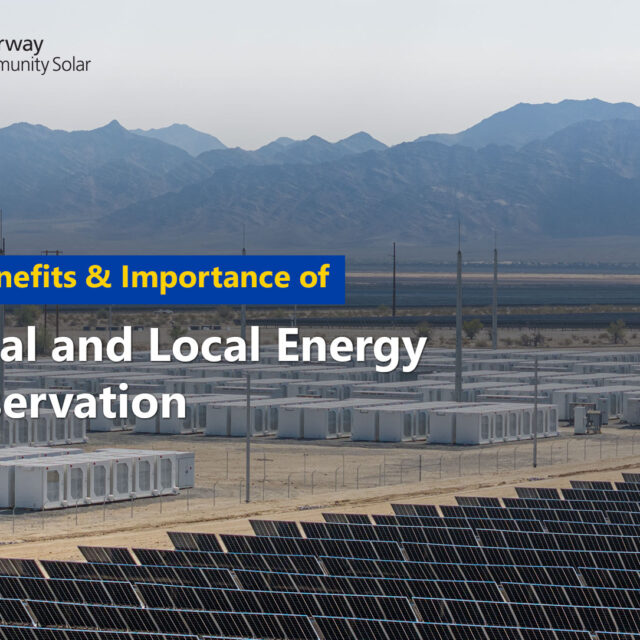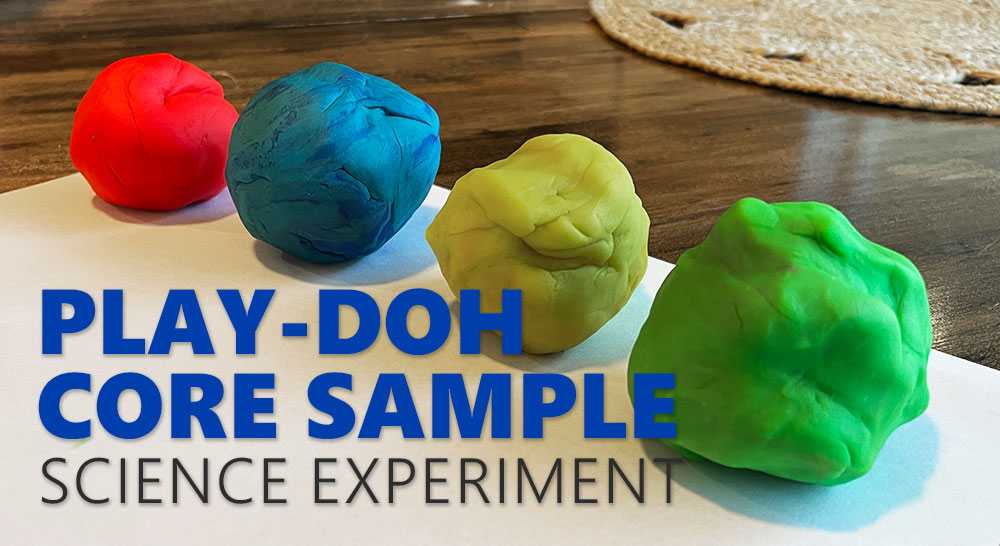
Parental Note: This experiment is geared toward ages 7 and up.
Additional Note: This activity will take about 35 minutes to complete.
Experiment Overview:
Water is important to sustain all life on Earth, but did you know that only about 0.3% of the freshwater on Earth’s surface is drinkable? Sometimes to access drinking water, people need to dig beneath Earth’s surface to a groundwater supply.
Earth has several different layers: the solid crust on the outside, the mantle, the outer core, and the inner core. In this project, we are just focusing on the surface layer of Earth—the crust. The crust is made up of a variety of rocks and minerals, which come in many forms and are found in layers throughout Earth’s crust. These layers can be made up of soft dirt, sand, clay, hard rocks, and water. These layers have formed over billions of years. The deepest layers are the oldest, and the ones closest to Earth’s surface are the newest.
Sometimes humans can gain access to the freshwater stored underground by digging a well. In this activity, we are going to pretend that you just bought a property in a place that doesn’t have a city water supply, and you are trying to decide where you want to dig your water well. You will create layers of different colored Play-Doh to represent the different layers of Earth’s crust that exist on your property. The blue Play-Doh will represent the water you are trying to dig down to. By using a straw to take a core sample from a few different spots in the ground of your property, you will decide which sample location is the best place for your well.
Before beginning, think about the following question(s) and write down your predictions:
- Is it easier to access water when it is close to the surface or buried beneath many layers of the Earth?
- Will it be easier or harder to dig a well in a place that has a thick layer of rocks?
- Will it be easier or harder to dig a well in a place that has a sandy layer to dig through to access groundwater?
Experiment Materials:
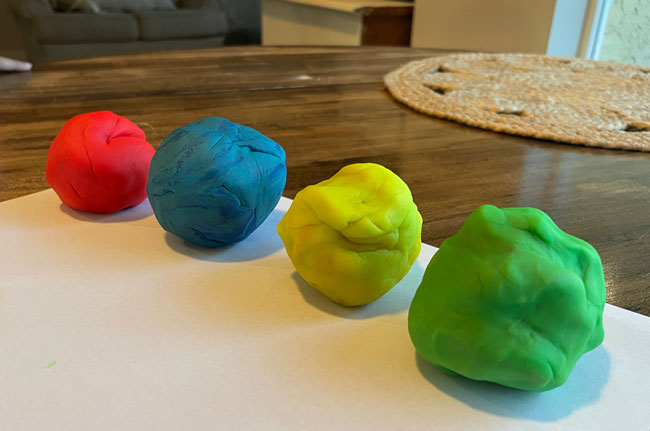
- 4 different colors of Play-Doh. We recommend Red, Yellow, Green, and Blue. (you can also make your own home-made colored playdough)
- Cutting board or parchment paper if needed to protect kitchen surfaces
- Plastic straw
- Piece of paper
Experiment Process:

Step 1
Prep your Play-Doh by dividing and forming balls of each color.
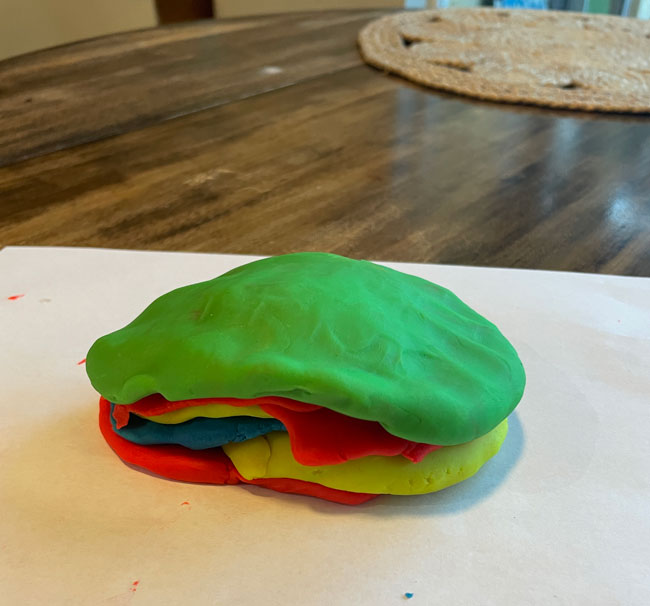
Step 2
Take your four different Play-Doh colors and shape them into layers. The top layer should have a large amount of green, followed by different smaller sections of red, yellow, and blue. Each layer should vary in thickness from one location to another on your property (see example image).
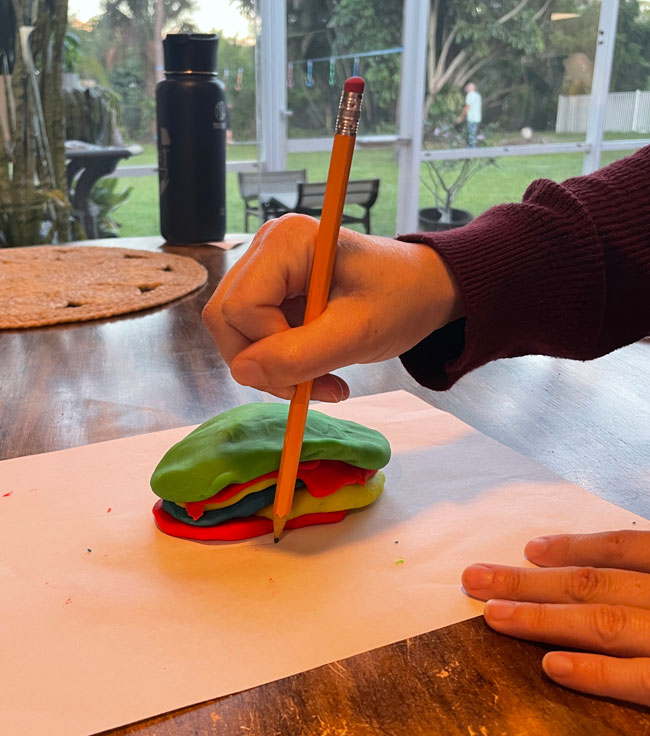
Step 3
Place your layers onto a piece of paper and trace an outline of your property onto the paper.
Step 4
Label your layers on the paper by creating a map key. Green = soft soil/grass, Red = hard rock, Yellow = sand, Blue = water.
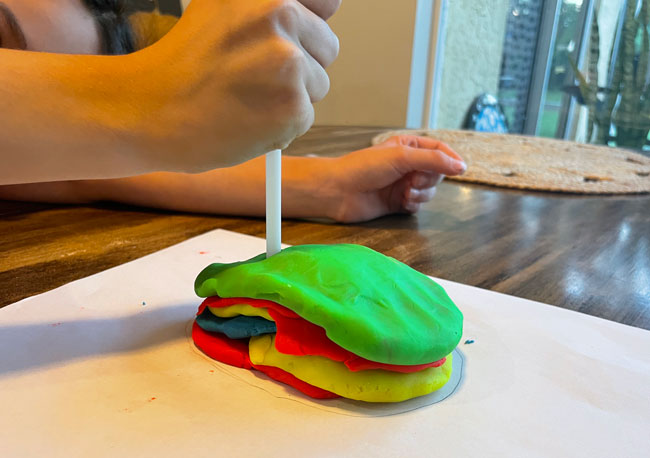
Step 5
Dig your first core sample from a random spot somewhere on the property. To do this, take your straw and press it through the Play-Doh layers. Once you reach the bottom, twist the straw around and pull up. You should see the Play-Doh inside the bottom of the straw.
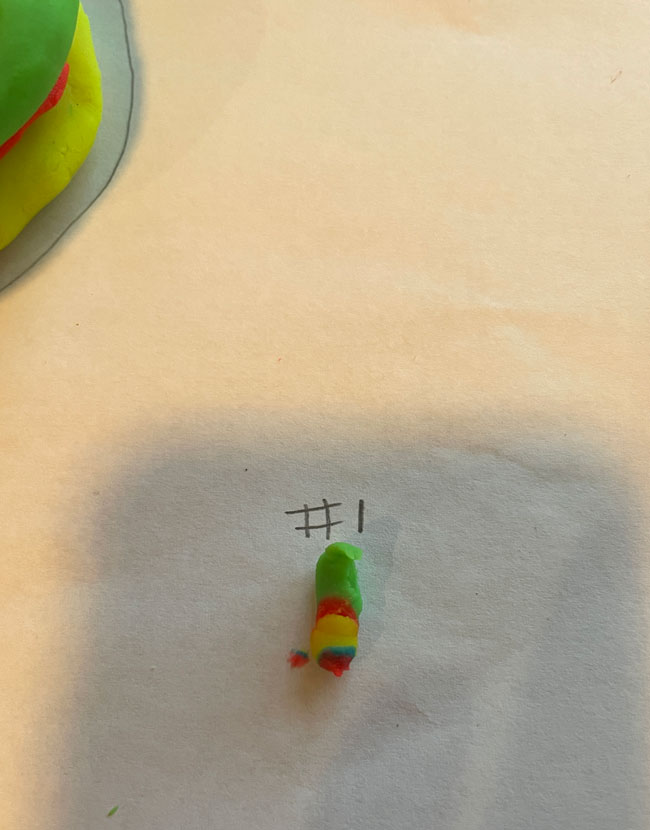
Step 6
Lay out your first core sample on a piece of paper. You can squeeze the sample out of the straw carefully with your fingers. Label your sample #1.
Step 7
In the hole where you dug your first core sample, take your pencil and insert it into that hole to trace the location on the piece of paper underneath.
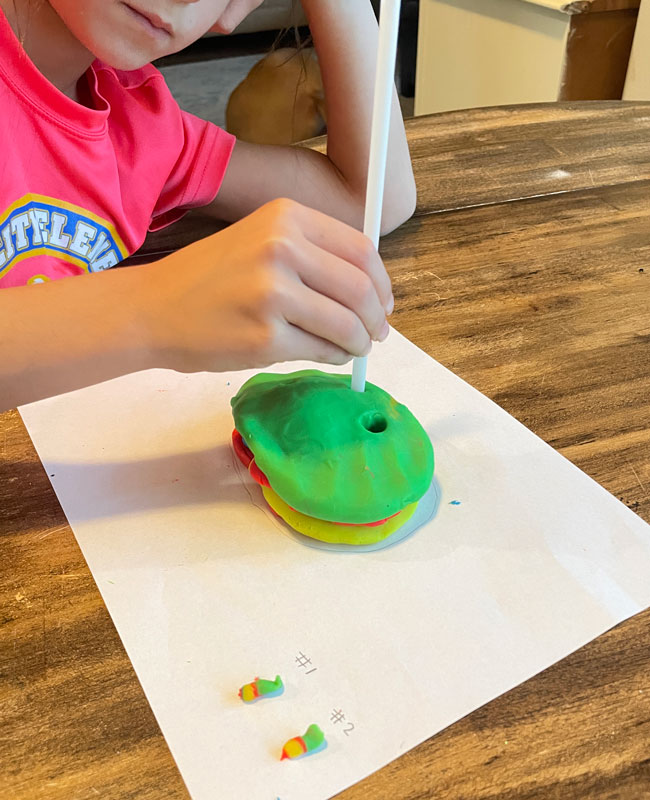
Step 8
Repeat steps 4-6 for the next two samples.
Share Your Results:
Looking at the three different samples you took, which of them do you think would be the best place to dig your well? Think about which material would be the easiest to dig through, and look at how thick the different layers are in each core sample you took. You can also look at things like how close or far away from the surface the water is in different locations.
Conclusions:
Freshwater is a precious resource on our planet, but much of the water on Earth’s surface is not suitable for drinking water. Sometimes, people need to dig deeper into the Earth to access drinking water or water to irrigate their crops. This is much easier to do in areas where there aren’t as many thick layers of hard sedimentary rocks to dig through. The layers of Earth’s crust look a bit different depending on where you are in the world, so digging into a water supply in Florida might look a lot different than digging into a water supply in Arizona. To determine the best place to dig a well, it’s a good idea to take exploratory core samples first.
Extension:
While only a small amount of the water on Earth is drinkable in its current form, there are processes that people use to turn dirty or salty water into drinkable fresh water. Learn about how to build your own distillery here.

